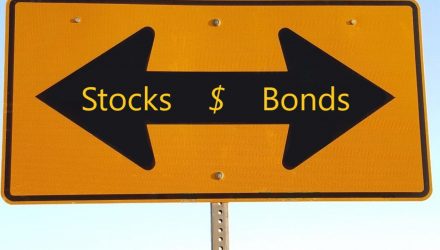The latest 50-basis point rate hike by the U.S. Federal Reserve only confirmed what the capital markets were anticipating, and where the market goes from here is anybody’s guess. With still a healthy dose of uncertainty left in the markets, it helps to get active exposure.
Stocks and bonds have both been heading in a downward direction for much of 2022 as inflation fears flood investors’ minds. It makes a traditional 60-40 stock-bond split a difficult strategy to implement when both are marching to the beat of the same drum.
“It is the latest dilemma for investors who are struggling to manage the large swings roiling financial markets around the globe,” the Wall Street Journal said. “This year’s declines have dealt a blow to the 60/40 portfolio model—a mix of 60% stocks and 40% bonds that have long been advertised as offering strong returns and hedging against the expected occasional pullback in stocks, which typically are viewed as being much riskier than bonds.”
Counteract With Active Management
One way to counteract the markets is to consider employing an active management style. The volatility that investors have been seeing as of late is more than enough reason to hand the keys to the bond portfolio over to a pro, and the T. Rowe Price QM U.S. Bond ETF (TAGG) essentially does all of that in a dynamic investment vehicle of an ETF.
TAGG seeks to outperform the Bloomberg U.S. Aggregate Bond Index, which is broadly diversified, containing a mix of investment-grade, fixed income instruments that have varying maturity dates. As an active strategy, the manager seeks to identify, and potentially capitalize on, some of the inherent structural issues faced by fixed income indexing. The goal is to provide a similar risk profile and general exposure as the U.S. Agg, but with the potential for greater performance and risk controls.
The fund comes with a 30-day SEC yield of 4.79% (as of March 31). The obvious skew is towards U.S. debt, with Treasury notes comprising the majority of holdings, and as of May 5, the top holding (13% of the fund’s allocation) is Treasury notes that mature in 2026. The fund will also typically include U.S. government and agency obligations, corporate bonds, mortgage- and asset-backed securities, and U.S. dollar-denominated securities from foreign issuers.
The advisor manages the portfolio through a blend of quantitative modeling (QM) and individual security selection driven by fundamental analysis. The result can lead to intentional overweight and underweight exposures compared to the index, but without disrupting the overall risk profile.
This active strategy makes a strong case as a complement or even a full replacement to typical U.S. Aggregate Bond exposure in a portfolio. When investors think of active management, the immediate thought process is to scream “expensive.” However, TAGG carries an annual expense ratio of just 0.08%.
For more news, information, and strategy, visit the Active ETF Channel.









